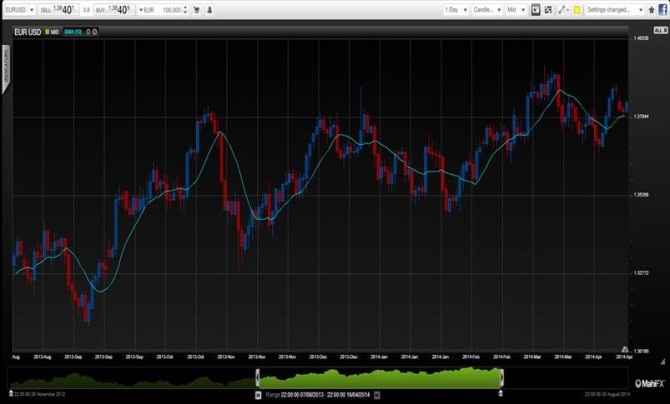Mario Draghi, the president of the European Central Bank, is probably one of the most effective central bankers when it comes to talking the markets in a particular direction – but if he wants a weaker EUR, action will have to back his words.
Recently the ECB surprised forex markets with talk of unconventional monetary stimulus programmes including even quantitative easing to ward off possible deflationary pressures. Draghi and some other ECB members have since tied the prospect of monetary intervention to the EUR being too strong.
This had the intended effect of weakening the EUR. But such are the pressures for the EUR to rise, like the current account surplus, positive fund flows and very low inflation that talk will have to morph into action. And that action will probably have to happen fairly soon, even if it is not necessarily QE, which for some Eurozone policy makers remains controversial.
By Justin Pugsley, Markets Analyst MahiFX. Follow @MahiFX on twitter
EUR/USD – 1.40 level could trigger action
Studying the options
ECB concerns over the strength of the EUR appear to be mainly focused on the fact that it is helping to create deflationary pressures in the Eurozone – rather than just hurting exports. Usually the primary concern for policy makers these days.
The ECB would probably prefer to wait for at least several more months of inflation data before deciding how to act or if it is even necessary. But the currency markets, forever trying to discount future news flow, are likely to try and push the EUR higher in turn creating a dilemma for the ECB.
The ECB could resort to direct intervention in the forex markets, such as simply selling EURs to drive down the exchange rate while it decides whether or not the Eurozone has a deflation problem. It’s a crude measure and if executed well can be effective for a short while, but fundamentals usually reassert themselves.
More subtle measures, and possibly more effective longer-term, could include cutting interest rates, even going for negative rates and looking at ways to push more money into the banking sector and most importantly from the ECB’s point of view the private sector. That would help stimulate investment and consumption.
The problem for the Eurozone remains a lack of domestic demand – hence the deflationary pressures and the rising current account surplus. Get the Eurozone consuming more and that could begin to address the ECB’s concerns over falling prices and push CPI back up to around the 2% target.
Further reading: Will the ECB ever really do QE?

